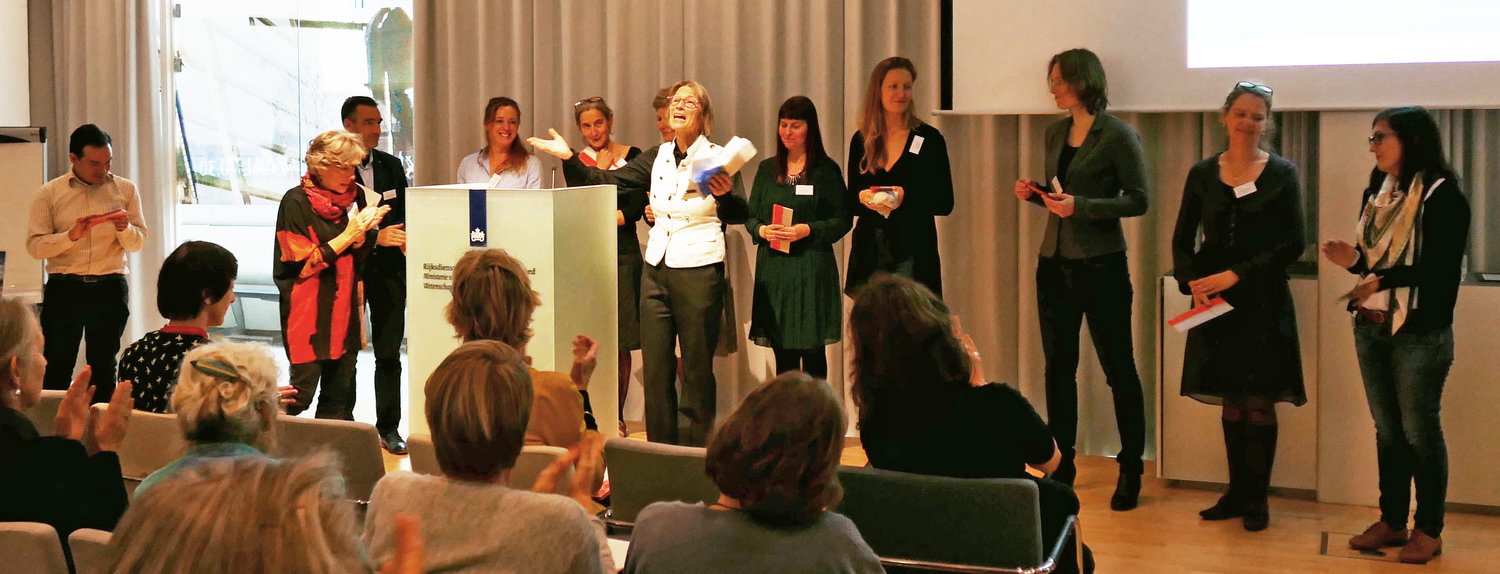The Textile Committee organized a symposium on the use of natural dyes in dyeing textiles on November 9th at the Cultural Heritage Agency of the Netherlands in Amersfoort. Natural dyes like yellow wish and red madder, cochineal lice, indigo, braziel wood and campeachy wood, or lichens, fungi and bacteria were discussed. Special attention was given to new developments, paint recipes, discolouration and socio-historical contexts.
Laura was invited by Ista Boszhard of TextileLab Amsterdam to co-host a presentation about bacterial dyes. In a completely sold-out room they spoke about dyeing with bacteria and Laura in particular spoke about the effect that sound vibrations have on the production of colour by the bacteria.

Kim van Savooyen, a colour expert, introduced those in the multifaceted world of color, emotions, appreciations and repulsion, contrasts and shades. The excellent chairman of the day, Agnes Brokerhof, then had time to make the audience into test subjects for her research into acceptance of discolouration.
Maarten van Bommel, professor at the UvA, complemented the first lecture with the explanation of the research into the parameters in historical paint recipes. Cochineal played a central role in the fascinating lecture by Ana Serrano, researcher at UvA, about colours from the New World, in particular the assimilation of American dyes in 16th and 17th century European textile centers. Casper de Groot, linguist, defended the proposition that there is a direct link between the dyeing of textiles and the arrival of colour names in language. After red, yellow and green, Art Ness Proaño Gaibor, researcher RCE, gave a sparkling talk about purple and the rescue of the lichens with the invention of the first synthetic dye mauvein.
After a well-deserved lunch, the participants returned to the room for the rich afternoon programme. Linda Hanssen, ethnographic textile expert, took the company to the breathtaking Japanese island group Okinawa, famous for the use of tree barking in weaving and painting techniques. Chrystel Brandenburgh, textile archaeologist Leiden, gave a beautiful illustration of colour in the early Middle Ages. Visual artist Nan Groot Antink gave her particularly inspiring story about the collection of dyes she has built up in over 25 years and its applications. The question of whether and how red dye in textiles can be reduced around 1900 was raised with verve by textile restorer Marijke de Bruijne.
During the closing drinks we talked extensively about the beautiful program and the very informative day.
